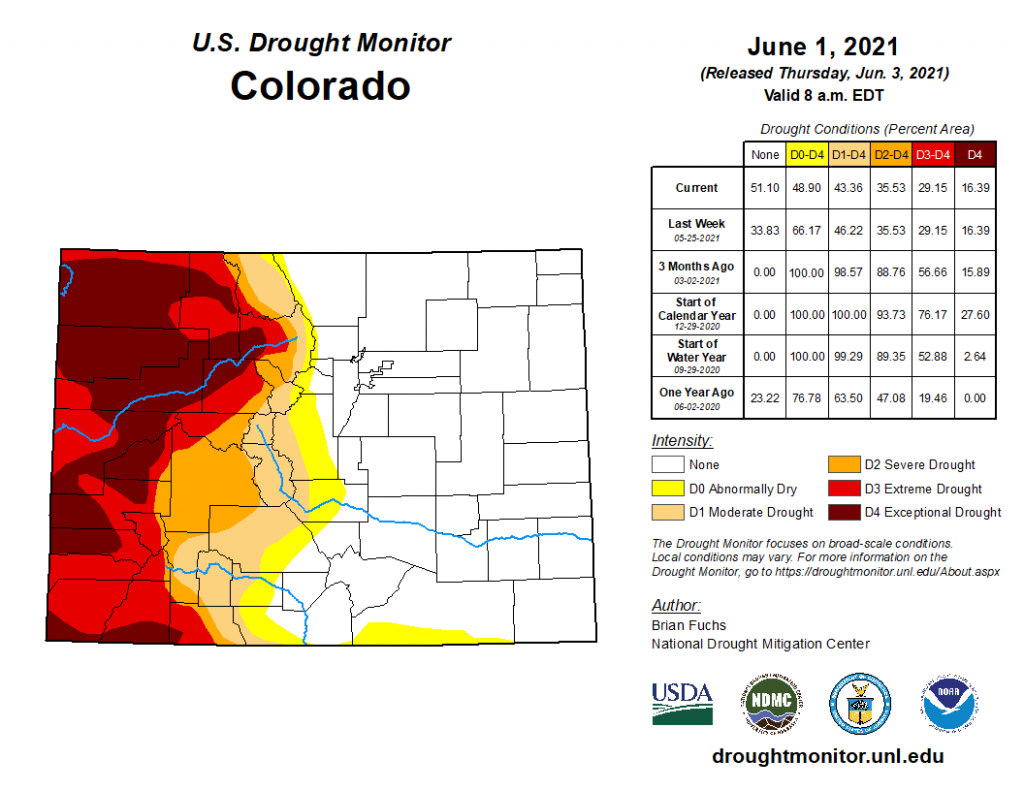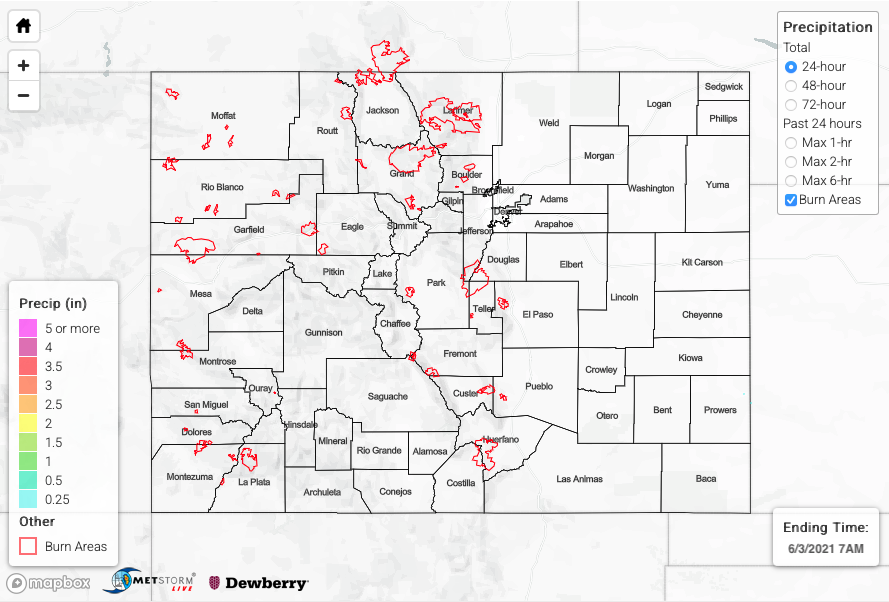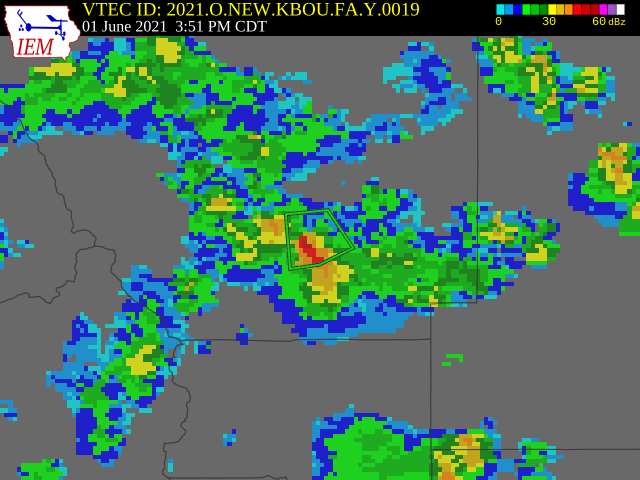Issue Date: Friday, June 4th, 2021
Issue Time: 9:05AM MDT
Summary:
It was quite the warm day on Thursday. High temperatures were on the rise as the ridge continued to strengthen, and afternoon temperatures reached 1 to 5F higher than Wednesday. A little bit of moisture was present under the ridge (south) that originated from a disturbance over the Gulf of Mexico. This helped spark afternoon storms over the southern high terrains with the diurnal flow pattern. Steering flow fairly quickly from the NNE, a dry surface layer and small storm cores limited rainfall accumulation and kept storms mostly confined to the mountains. Storm totals (west) up to 0.30 inches were reported (Upper Rio Grande SNOTEL) and 0.11 inches east (La Veta Pass ASOS). Further north, storms produced less than 0.10 inches. Storms began to wane and fade away just after sundown.
Rather than rainfall, the main threat from storms were lightning and outflow winds. Around 5:30PM, there was a dust storm reported in the San Luis Valley that was triggered by these dissipating thunderstorms. A wall of dust extended from 19 miles southeast of Wolf Creek Pass to Alamosa near Blanca. The KLAS (Alamosa) airport ASOS recorded a gust of 35 mph and sustained winds just over 25 mph, which more than likely briefly dropped visibility to less than a mile. There’s a picture of the dust wall from Wilt Chamberlain at 5:20PM on Twitter (click me). It was taken at the intersection of 8 South and 106 South – just southwest of Alamosa.
As anticipated, flooding was not reported on Thursday. To see precipitation estimates over your neighborhood the last 24 to 72-hours, scroll down to the State Precipitation Map below.






